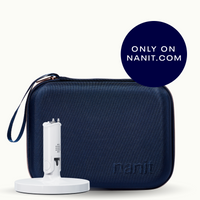Respiratory syncytial virus (RSV) is a common virus that virtually everyone will have been infected with by the age of three years. It is common to be infected more than once, even in the same RSV season; however, after the first time, subsequent infections are typically milder.
For most, it causes typical cold-like symptoms such as a runny nose, cough, and fever. However, for some infants and young children, RSV can lead to more serious respiratory symptoms and may even require hospitalization.
In children under 2 years of age it can also cause bronchiolitis (different from bronchitis). Bronchiolitis is a lower respiratory tract inflammation that occurs in some infants and toddlers and results in wheezing (a whistling sound heard as the child exhales). If it develops, the symptoms of bronchiolitis typically occur after one to three days of common cold symptoms; nasal congestion and discharge, fever, and/or cough. Unfortunately there is no way to predict how the virus/symptoms will manifest in your child.
Babies under six months old, premature infants or infants and children with underlying cardiac or lung disease are those at greater risk for more significant symptoms due to their
- Smaller airways and developing immune systems
- The inability to clear mucus as effectively
- The frequent exposure to environments where viruses can spread (ie daycare, classes, playrooms)
Understanding RSV symptoms, prevention, and care can help parents feel more confident in protecting and caring for their little ones.
Recognizing RSV Symptoms in Babies
RSV usually starts with symptoms similar to a typical upper respiratory infection/ cold. However, like any respiratory illness in infants and young children, the symptoms can worsen and should be monitored closely. About 3% of children with RSV develop bronchiolitis that requires hospitalization.
Common upper respiratory infection AND RSV Symptoms:
- Runny nose usually with a lot of clear nasal secretions/discharge
- Cough
- Fever
- Decreased appetite
In most cases, these symptoms improve within 2-5 days. However, any respiratory infection including RSV can progress to more severe respiratory symptoms including,
- Retractions (sucking in of the skin around, above or below the ribs,
- Nasal flaring (when the nostrils widen during breathing),
- Grunting (a breathing noise that sounds like they are intentionally pushing air into their lungs)
- Breathing rapidly (60 to 80 times per minute)
- Fever (100.4 or greater) that lasts more than 72 hours
- Difficulty drinking related to nasal congestion and rapid breathing, which can result in dehydration (<3 voids in 24 hours)
If your baby’s symptoms aren’t improving or if new symptoms emerge, contact your doctor. Additionally, if your baby shows signs of severe respiratory symptoms seek immediate medical attention.
Ultimately, trust your instincts. If something doesn’t seem right, reach out to your pediatrician or visit the emergency room to ensure your baby receives the medical attention they need to recover safely.
How RSV Spreads and How to Prevent It
Respiratory syncytial virus (RSV) is transmitted (spread) through droplets that contain viral particles; these are exhaled into the air when an infected person breathes, talks, coughs, or sneezes. These droplets can be carried on the hands, where they survive and can spread infection for several hours.
In the northern hemisphere RSV is typically circulating from October to April, with greatest prevalence between December-February. While it is nearly impossible to prevent all illnesses, certain precautions can help reduce your baby’s risk of getting RSV:
- Limit exposure to sick individuals, especially during peak respiratory virus season (the fall and winter).
- Practice good hand hygiene by washing your hands frequently and cleaning toys and items your baby frequently touches or mouths.
- Receive the RSV immunization during the 3rd trimester of pregnancy or have your baby receive the monoclonal antibody injection before 8 months of age, during their first RSV season.
New RSV Protection Options
Beyfortus is a monoclonal antibody (not a traditional vaccine), and it works by giving babies a ready-made boost (antibodies to RSV) to protect them from the virus during their most vulnerable months.
This preventative measure is designed to provide infants with an added layer of defense against RSV. While it’s not a one-size-fits-all solution, it’s worth discussing with your healthcare provider to see if it’s appropriate for your infant.
Another option to help protect infants from RSV infection is the RSV Vaccine available for pregnant Individuals. This vaccine is administered between 32-36 weeks of pregnancy. It stimulates the pregnant individual to make antibodies against RSV that are then passively transferred to the fetus during the third trimester of pregnancy.
Caring for a Baby with RSV
Like any viral illness, if your baby has RSV, treatment starts with “supportive care”. There is no medication to treat RSV. Most infants recover at home within 2-5 days, although often the congestion and cough may linger.
At-Home Care Tips:
- Hydration is key. If your baby is drinking less than usual, make sure to offer small, frequent feeds to prevent dehydration.
- Use a cool mist humidifier. Moist air can help loosen mucus and facilitate clearance from nose and chest.
- Clear nasal congestion with saline drops. The saline can help loosen mucus and help keep nasal passages clear.
- Manage fever. If your baby has a fever, acetaminophen (for babies older than 6 weeks) or ibuprofen (for babies over six months) can help keep them comfortable.
If your infant is 6 weeks or younger and has a fever of 100.4 or higher contact your pediatrician. These infants require an immediate evaluation by your pediatrician or in the ER.
When to See a Doctor
Most babies recover without complications, but seek medical care if your baby:
- Is struggling to catch their breath or shows signs of respiratory distress (see list above).
- Has a fever above 100.4 that lasts more than 72 hours.
- Shows signs of dehydration (i.e. fewer than three wet diapers in 24 hours).
Finding Support and Peace of Mind
Most importantly, trust your instincts. If something doesn’t seem right, call or visit your pediatrician or your local Emergency Room.
Caring for a sick baby can be overwhelming, make sure to contact your pediatrician if you have any concerns about your infant's health.
Final Takeaways
While RSV can evolve into a more severe illness and can be cause for concern in parents, knowing what to look for can help you protect your baby. By understanding the common and severe symptoms of RSV, you can be better prepared and more confident knowing what to monitor for.
Monitor your baby with Nanit
Tools like Nanit’s baby monitors can offer added peace of mind by tracking your baby’s sleep patterns and breathing motion. They allow you to monitor their health even while they rest. With real-time alerts and insightful data, Nanit ensures you have the support you need as your little one recovers.
Though not a medical device or a tool for diagnosing respiratory distress, Nanit’s technology allows you to monitor your baby’s overall well-being. Features like Breathing Wear and sleep analytics provide peace of mind, ensuring you’re always in tune with your baby’s routines, whether they’re resting comfortably or recovering from an illness.









































